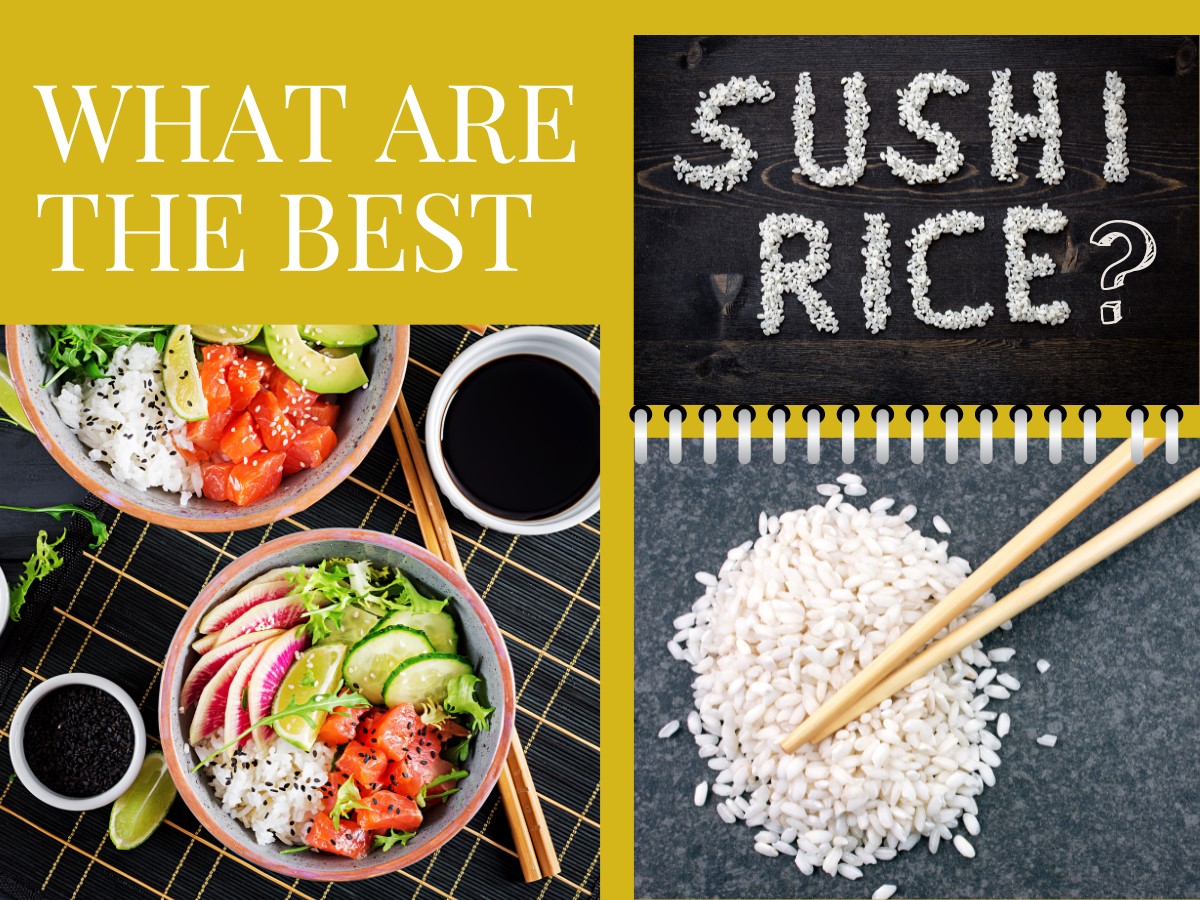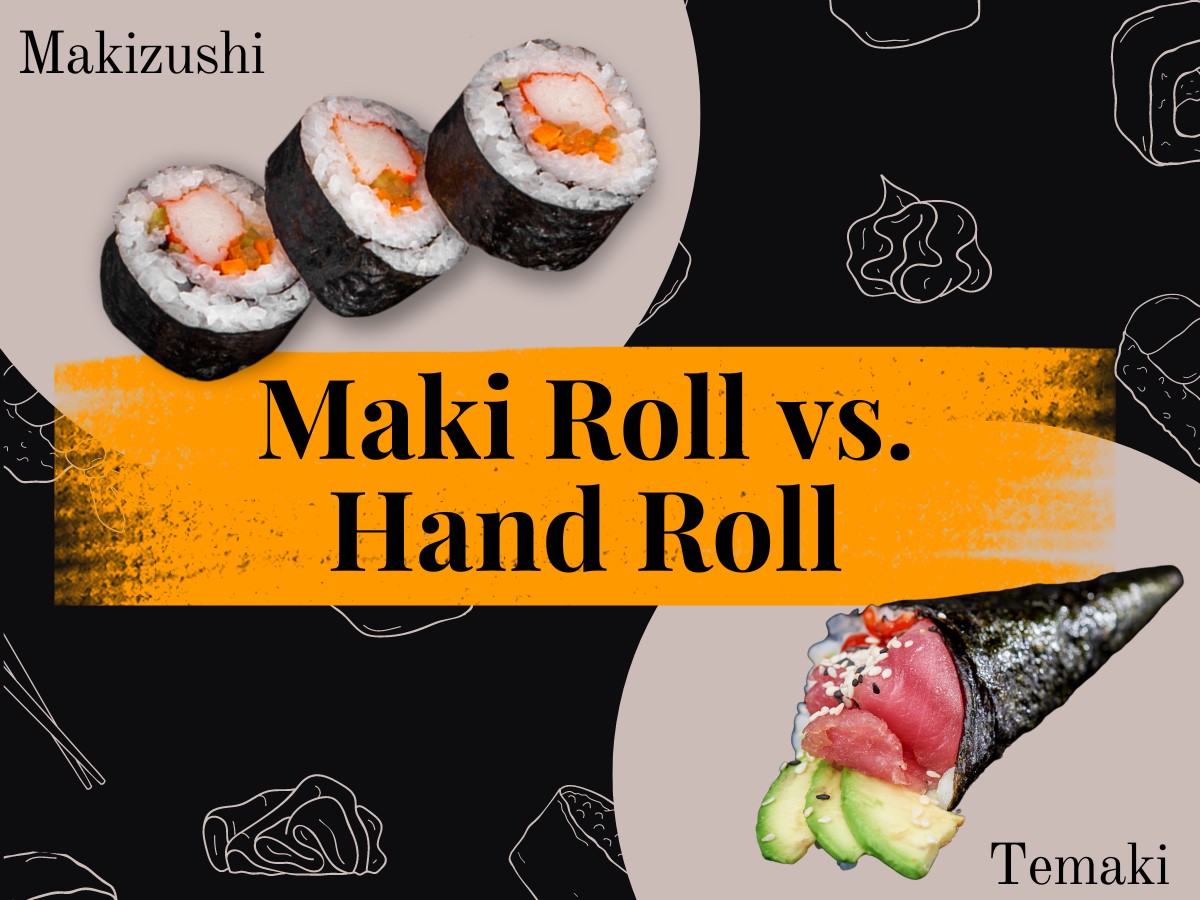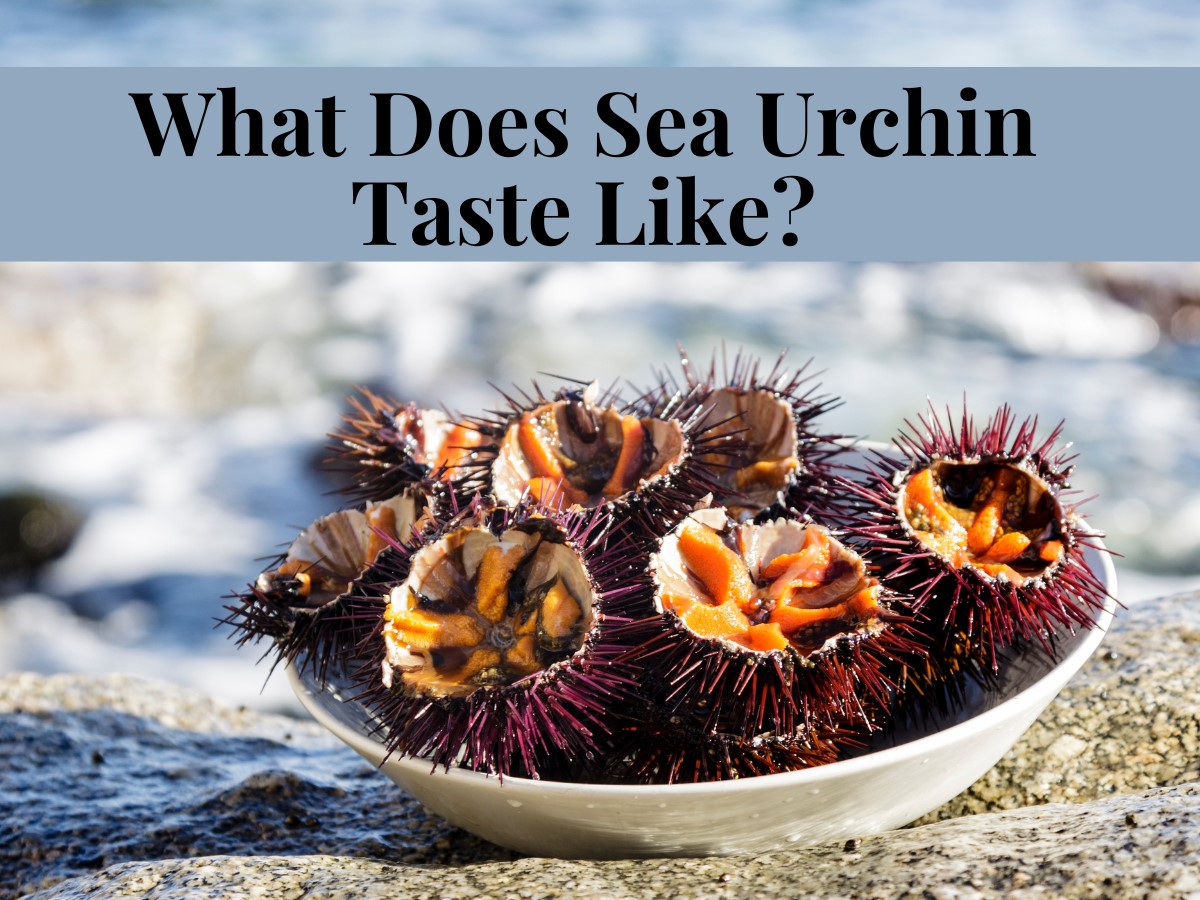There’s nothing more satisfying than perfectly cooked sushi rice. This feeling is amazing to me because, in the past, my sushi rice always turned out mushy. But then, one day, I met my Japanese friend’s mother, who taught me all about choosing and cooking sushi rice perfectly. Now, it’s no wonder my guests love my sushi recipe. So one of the tips my friend’s mother gave me, and I would love to share it with you here, is to know what kind of rice for sushi you should use.
To answer this query in one line, I would say Japonica rice should be your first choice to cook sushi rice. These short-grain rice comprising ordinary and glutinous grains are readily available in Asian grocery stores. You can try the Koshihikari brand for the highest quality Japonica (Japanese) rice. The next on the bucket list, according to my sushi mentor, is sushi rice- the steamed and vinegared Japanese rice; you can make them at home too.
Nevertheless, if you don’t find Japonica or sushi rice in your region, you can try other alternatives to take your sushi to the next level. Scroll down to learn all about the best sushi rice.
What Kind of Rice for Sushi Should you Use? (For Original Sushi Recipe)
There are three categories of rice depending on their grain length; short grain, medium, and long grain. For sushi, it’s best to use short-grain rice because they are rich in starch and sticky enough to hold the right shape of sushi. However, you can also use medium-grain rice in case you don’t find the short ones, but never use long-grain rice for sushi.
As I mentioned above, Japonica rice works best if you wish to get the original sushi taste and texture. These are short, round, smooth, and hard grains rich in amylopectin (starch), which hydrolyses in hot water and gives the rice a firmer yet stickier consistency. Unfortunately, the cost of these sushi rice is high, but they are worth it. You can get the highest quality Japonica rice from famous Japanese brands; I enlisted some in the next section.
The next rice variety is sushi rice. Many people confuse sushi rice with Japonica rice. However, the two are a bit different. Some brands label their short-grain Japanese or medium-grain California rice as sushi rice. Therefore, you may get medium-grain California rice when asked for sushi rice which is ok to use, but I prefer short-grain Japonica rice.
Also, you can make the original Japanese sushi rice- “sumeshi,” at home. For this purpose, you only need to steam your store-bought Japonica or California rice in a rice cooker or pot and then sprinkle salt, sugar, and vinegar to get the right umami flavor of the sushi.
Well, if it isn’t possible to obtain the original Japonica rice, you can go for Calrose rice. Calrose rice is a well-known and highly recognized variety of California rice characterized by medium grain that becomes soft and sticky after boiling.
The Popular Japanese Brands and Sushi Rice Cultivars
Here are some famous Japanese sushi rice cultivars; some have become a brand like Koshihikari sushi rice.
Koshihikari
Koshihikar is a popular Japanese rice cultivar that offers the best sushi rice rich in aroma, delicious flavor, fine polish, and perfect sticky consistency. These rice also do not get hard after cooling, so you can choose this brand as your first choice.
Akitakomachi
The Akitakomachi cultivar has been developed from a cross between Koshihikari and Ou No. 292 rice to get the enriched flavor and texture of Koshihikari rice. This rice variety has a high water content that keeps the rice fresh and new even after hours.
Nanatsuboshi
This rice is farmed in Hokkaido with the highest yield. It steams up puffy and shiny, offering the ideal harmony of stickiness and tenderness. This sushi rice variety complements all cuisines wonderfully. Moreover, it is perfect for sushi because it is delectable when served cool.
Hitomebore
Hitomebore cultivar resulted from a crossbreed between Hatsuboshi and Koshihikari rice plants to get the subtle flavor, a blend of umaminess and sweetness, and the ideal consistency of sushi rice. However, this variety is not as fresh as Akitakomachi rice, yet perfectly balanced.
Hinohikari
It is a short-grain sushi rice variety- a well-known product of Western Japan. It is famous for its plumpy and chewy texture, subtle aroma, and lustrous polish on the grains.
Tsuyahime
Tsuyahime is a product of a cross-breed between Yamagata No.70 and Tohoko No. 154 rice plants. It is well-known for its lustrous look and delicious flavor, a blend of perfect umami, savory, and sweet taste due to its high aspartic and glutamic acid content.
What Kind of Rice for Sushi Should You Avoid?
Long grain or basmati rice is an inadequate option to make sushi because these grains lack the sufficient starch content required for the proper sticky consistency and hold. You can make the best sushi with short-grain Japonica or medium-grain California rice. Also, if you are health-conscious or are managing medical conditions like diabetes, obesity, and GI problems, you can try the above-mentioned healthy alternatives for sushi rice. Regardless of your choice, I recommend not opting for long-grain rice for sushi.
The Healthy Sushi Rice Alternatives (For People on a Diet)
Here I have mentioned some healthy alternatives for sushi rice; I tried and tested them for my friends and family- some of them are vegetarian, on a diet and a weight-loss journey, and a few have diabetes and GI issues. Therefore, the following options are equally effective for anyone with the same story.
Brown Rice
Brown rice is the least used variety of rice for sushi recipes; however, it’s the healthiest option. This highly-nutritious and gluten-free rice is rich in vitamins and minerals and best for people with diabetes or on a weight-loss journey. However, brown rice takes a bit longer to boil and has a strong flavor that not everyone likes in sushi. In a nutshell, this rice will not give you the original sushi flavor but can cut back on your calories. So the choice is yours.
Quinoa Rice
Quinoa is the best option for veg sushi lovers and those who are allergic to gluten since it is loaded with protein, vitamins, minerals, and dietary fiber. However, quinoa takes longer to cook and is not starchy. So to roll quinoa into a sushi ball, you may add sugar while cooking it to get a sticky texture.
Broccoli Rice
You can go for a nutritious sushi roll next time with broccoli rice. Broccoli rice is rich in antioxidants, protein, and fiber. For this, finely chop the broccoli flowers and steam them as you casually do, add seasonings, and voila!
Cauliflower Rice
Cauliflower rice is another healthy option to avoid gluten and extra carbs. You can easily prepare this rice at home. For this purpose, you only need to grate a fresh cauliflower to resemble the short-grain rice. Then, cook them on a low flame until tender; do not add water since they will cook in their own water. You can add olive oil and other seasonings like salt, sugar, and vinegar to dulcify and acidify the cauliflower’s bland taste.
Couscous
Couscous is not rice but a healthy alternative for sushi lovers who cannot consume sushi rice. It’s a rich source of proteins, fiber, and B vitamins and is naturally fat-free. Prepare couscous as per the package directions and add them to your favorite sushi rolls.
Also Read: How To Cook Sushi Rice Like A Michelin Star Chef



